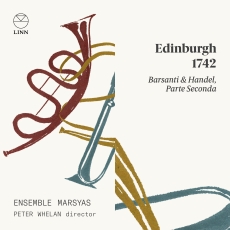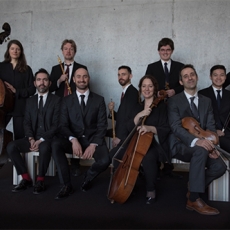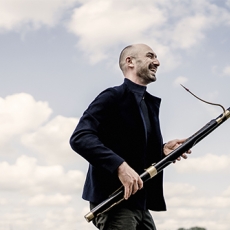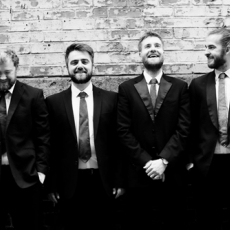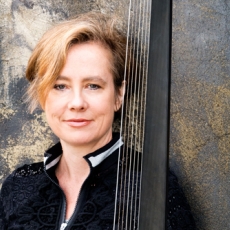Ensemble Marsyas - Edinburgh 1742, Parte seconda - Fanfare
The actual title of this disc is Edinburgh 1742 Parte Seconda, which is a follow-on to an earlier disc released by Linn with the first five concerti grossi of Francesco Barsanti’s op. 3. Barsanti was hired by the Edinburgh Music Society in 1735 as its in-house composer, and while he was there he was able to raise the standards of this amateur group considerably. As a foreigner, he had a certain appeal to the membership, but the composer soon became quite enamored with the unique musical environment in the Scottish capital. He appears to have found the tradition of Scottish folk music particularly appealing, and so he transcribed, arranged, and published several collections of them for his musical compatriots. Indeed, his transcriptions were so well received that they may have been the originators of a fad for Scottish song throughout the rest of the United Kingdom during the 18th century. Due to his interest in historical origins of these tunes, he was less inclined to modernize the modal harmonies and non-traditional voice leading, though he did rearrange them for a melody instrument (generally a violin, but which could also have been flute or oboe) and continuo (probably only a harpsichord, but perhaps also a clavichord or a plucked instrument; here a Baroque guitar).
The concertos are rather intriguing. For example, the martial rhythms of the opening of the first one, in C Major, are enhanced by a lone kettledrum, whereupon the ensuing Allegro seems a nice gloss on a Scots tune, here done up in a highly contrapuntal style, but then the oboes, trumpet, and timpani give it a semblance of power. The third movement is a strophic lament, not out of place in a Handel aria, while the finale is lively and joyous, with rushing figures and a galant undertone in the flourishes of the oboes and trumpet. The same vibe permeates the second concerto, also in C Major. The opening Sostenuto is a veritable call to arms with powerful oboe and string imitations, punctuated by the trumpet and timpani. Not surprising, the next movement seems like a call to charge the enemy, with its insistent theme that is repeated sequentially throughout. One might be forgiven if there is a touch of the “Hallelujah” chorus in the main motive. After another plaintive aria, the finale is a regal march, here couched as a proud minuet. Of the third concerto, again in C Major, the real standout movement is the second, which is a rather complex fugue, worthy again of Handel. Of course, this vies with the finale, which is a very military style march, replete with the powerful brass and a solo kettledrum opening. The first D-Major Concerto opens with the call to charge, something that Handel used to great effect in his Dettingen Te Deum, and even the following fugue and lyrical aria cannot overrule effect. The final concerto, likewise in D, is the longest of the bunch. Here the second Allegro stands out for its brief and scattered flourishes, which then return at the end. Barely 20 seconds long, it is an effective diversion.
Of course, some of the most interesting portions are the Scottish songs. “Dumbarton’s Drums” are quite plaintive in a very Highland way, while “The Cornriggs are bonnie” almost requires a kilt and sporran as it gets faster and faster. Barsanti has captured the essence of the Scottish song with all of its harmonic peculiarities. The performance by the Ensemble Marsyas is very well done. The sound seems a bit on the softer side at times, but the nuances that outline this sort of music are clear. The ensemble has good tempos, led by Peter Whelan, and the music is phrased nicely. Barsanti was not just pandering to Scottish tastes in the “provinces,” as the English might refer to anything north of London, but he shows a real affinity for capturing the musical mood of the time. Handel could not have done it better.
